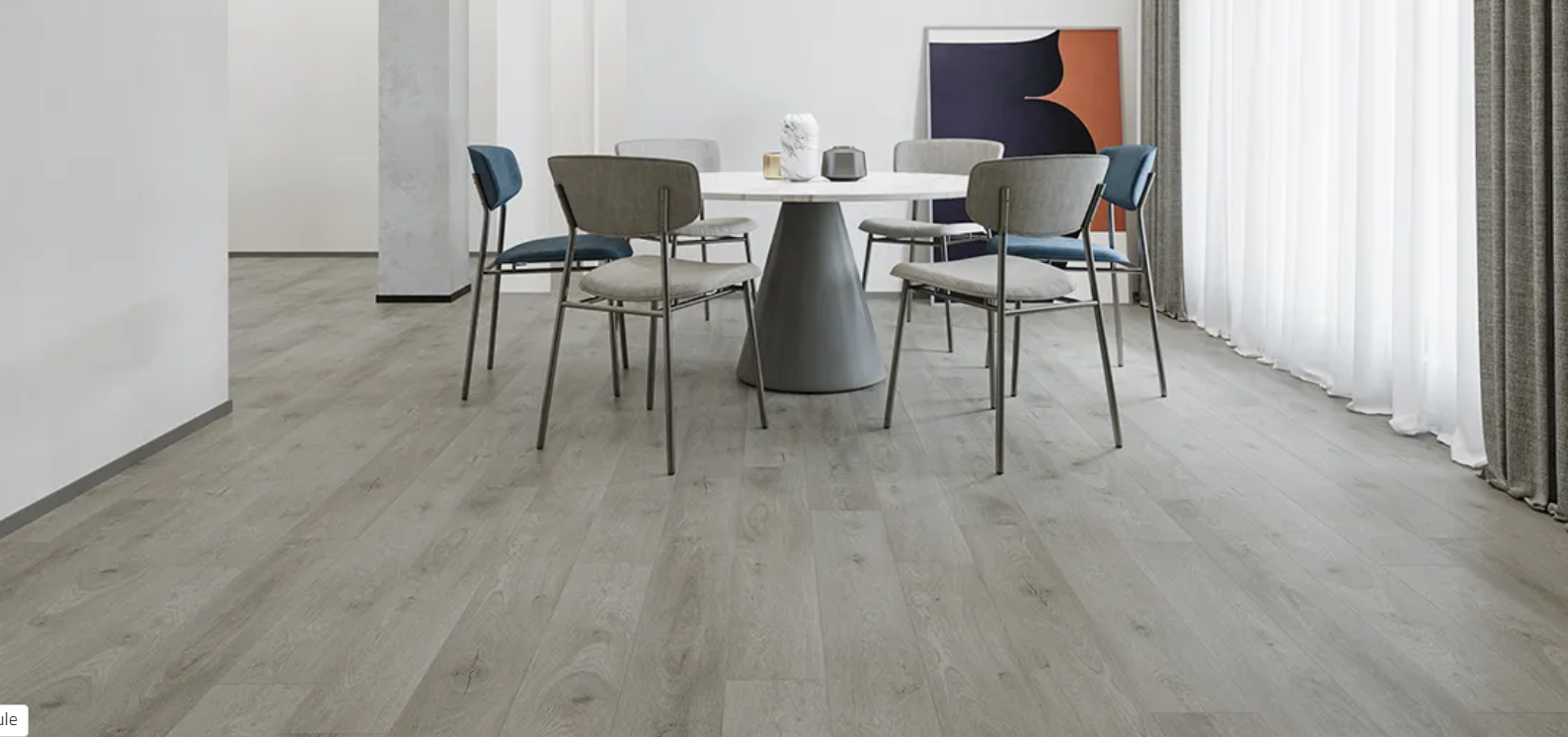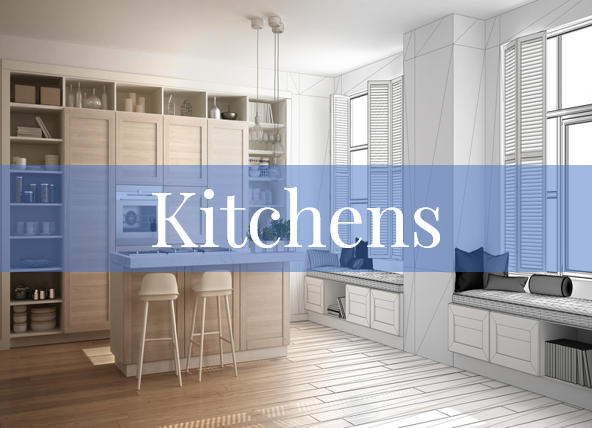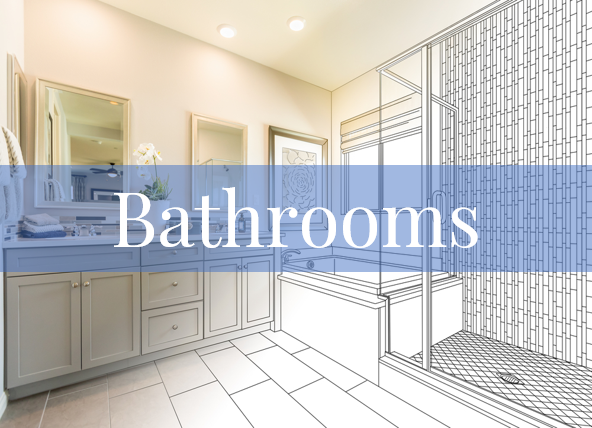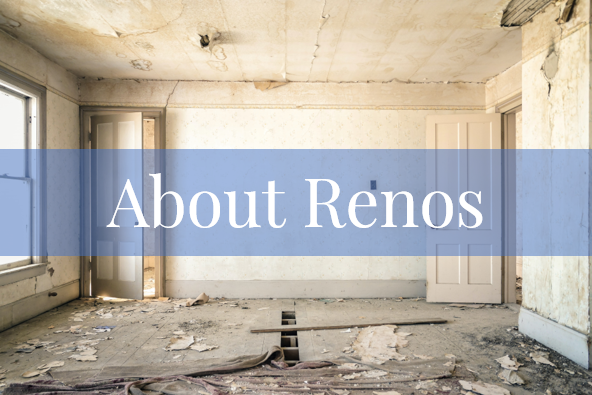Our Top 4 Favourite Flooring Options for Your Home
/Choosing just the right flooring can be one of the most important decisions you will make during a renovation. There are so many things to consider, including style, colour, durability, and maintenance. Before you make your final selection, you need to get educated on the choices available, the differences in quality, and the pros and cons of each.
Prefer to listen?
So how do you select just the right flooring?
There are many things to consider to help you narrow down your choices.
What is the room being used for? If it's a bedroom where you are just relaxing and sleeping, carpet may be a great, luxurious option. However, if it's the living room and sometimes meals are eaten there or kids play there with paints, crayons, etc., then carpet isn't the best option. Ask yourself if you need durable, easy-to-clean (in the event of stains) flooring. That will help you decide what options are best.
Do you have children or pets? If the answer is yes, you may need to consider scratch-resistant and spill-proof flooring. A great option to consider is luxury vinyl plank flooring.
Do you have a set budget for the flooring? If you have limitations, then make this known to your contractor or flooring supplier. If you have champagne taste on a beer budget, you might need to change your plans from engineered hardwood to sheet vinyl.
Are you planning to do the installation yourself or hire professionals? If you're planning a DIY and haven't had a lot of experience doing flooring, you want to select something simple. Sheet vinyl, vinyl plank flooring, or click laminate flooring are all good DIY options. Hardwood flooring, carpet, and tile are options best left for the pros.
How long are you planning on staying in your home? If you're planning on selling your home within the next year, you're going to be making a very different choice in flooring compared to staying in your home for 5, 10, or 15 years. Opting for high-quality, durable flooring will reap rewards in the long term and give you the best return on your investment.
Types of Flooring
There are tons of choices available to consumers today, but we'll explore our favourite four. We'll let you know what rooms are best for each type, along with the pros and cons of each.
1. Luxury Vinyl Plank or Luxury Vinyl Tiles
Luxury vinyl plank (LVP) is usually designed to look like hardwood flooring. However, luxury vinyl tiles (LVT) have so many styles and designs available that you can even purchase LVT that looks like Carrera marble tile. Luxury vinyl is sold in semi-rigid planks or tiles.
Whenever I mention vinyl to my clients, they often think of that horrid linoleum that was installed in their parent's or grandparent's homes. Vinyl has come a long way since then, with upgrades in quality, durability, and style.
Luxury vinyl has been around since the 1970s, but it really only took off in popularity in the last 20 years. Luxury vinyl still contains the same PVC vinyl but is made with 6–8 layers of material, including a clear top layer for shine, a clear wear layer to protect, a design layer, a cushion layer of foam to make it comfortable to walk on, and two backing layers for durability and strength.
Pros
100% waterproof
There are tons of styles and designs to select from
LVP is very affordable
LVP is easy to install
Suitable for almost any style of decor
It is easy to remove a damaged piece and replace it
Easy to clean with just a pail and mop
Very realistic in mimicking the appearance of wood and tile
Cons
LVT requires a bit of skill to install
Doesn't do well with extreme heat, so it's not suitable for under a hot water tank or furnace
Can fade over time if exposed to direct sunlight
Where to Use
Kitchens
Bathrooms
Basements
Living Rooms
Family Rooms
Bedrooms
Offices
Laundry Rooms
Mud Rooms
Front Entrance
2. Hardwood Flooring
When it comes to hardwood flooring, the main thing you need to decide is if you want solid hardwood or engineered hardwood.
Solid hardwood is just that—solid wood all the way through. It's generally 3/4" thick. Solid hardwood can be sanded and refinished at least once, but often two or sometimes even three times, depending on the thickness.
Engineered hardwood is manufactured in layers. The top layer is a hardwood veneer, and then there are layers of laminated wood below that. These lower layers may or may not be of the same type of wood as the top layer. The main difference between the two is a solid piece of wood versus layers of laminated wood.
So is one better than the other?
The main advantage of solid hardwood flooring is that it can be sanded and refinished. Engineered hardwood cannot. Solid hardwood is usually easier to repair if you scratch it, dent it, or have water damage.
If you're comparing the costs of each, quality really does matter. You can find cheap engineered hardwood, but if you're looking for a reasonably good-quality one, you'll sometimes find a solid hardwood floor to be less expensive.
Pros of Hardwood Flooring—Engineered or Solid
Very popular choice as it is visually appealing
Available in many types of woods
Solid hardwood can be sanded and refinished
Very elegant and luxurious look
High return on your investment
Cons
Expensive compared to some other flooring options
Not waterproof
Can easily scratch if you have pets
Solid hardwood will expand and contract if your home is not at a steady temperature or if you have high humidity in the summer
Solid hardwood should not be installed on top of a concrete floor making it inappropriate for basements unless you install a subfloor first
Where to Use
Bedrooms
Living Rooms
Dining Rooms
Offices
Family Rooms
3. Porcelain or Ceramic Tile
With the multitude of options available (there are literally thousands of designs and styles), you won't have any trouble finding something you like. For high-traffic areas or moisture-prone areas of your home, tile is often the flooring of choice.
Both porcelain and ceramic tiles are clay-based and kiln-fired, but porcelain is technically a specialized type of ceramic. The more refined clays used to make porcelain have a higher density and are fired longer at a higher temperature than ceramic. Porcelain is typically stronger and harder than ceramic, but it is not typically more expensive.
We always recommend our clients buy porcelain tiles where possible. To tell if the tile is porcelain or ceramic, feel it. If the finish is smooth, it's porcelain. If it's bumpy or coarse, it's ceramic. If the top of the tile is already glazed, this test won't apply. Turn the tile over and feel the back.
Pros
There are tons of styles and designs to choose from
Very durable
Waterproof
Can be inexpensive per square foot for the actual tile
Cons
This is not a DIY project if you have no experience in tiling
Labour rates can be quite expensive for an experienced tile setter
If you don't seal the grout or use grout with sealant in it, the grout can stain and be almost impossible to clean
Can chip and scratch over time
Where to Use
Bathrooms
Kitchens
Laundry Rooms
Mud Rooms
Front Entrance
4. Carpet
Carpet still remains a favourite with home owners. You can't beat the feel of a plush, luxurious carpet on your bare feet! Although most are steering clear of carpet these days, it still has its place in certain areas of your home.
Pros
One of the least expensive flooring options
There are lots of styles and designs to choose from
Soft and warm on the feet
A good option for soundproofing from one floor to the next
Durable and stain-resistant options are available
Cons
Difficult to maintain as professional cleaning is usually necessary
Can stain quite easily
Not at all moisture proof, so not suitable for kitchens and bathrooms
Because claws can get caught in fibres and pets can stain carpets, they are not suitable for homes with pets
Can absorb and hold smells
Traps dust despite regular vacuuming
Where to Use
Bedrooms
Living Rooms
Family Rooms
Basements
In summary...
When planning a renovation, consider what your options are for new flooring. We have had some clients who want to keep their existing flooring and almost always regret that decision afterward. When everything else is new in that room, having old flooring can date the look, remind you that it's still 'old', and start to wear out before you're ready to renovate again. Try to leave room in your budget to install new flooring. Think about the questions we've raised in this post and carefully consider the pros and cons of each type of flooring. Then, make your way to a flooring store! Be sure to look at and feel the types of flooring you're considering. And don't forget to bring some samples back home with you. The flooring will look different in your own home than it will in the store!

















